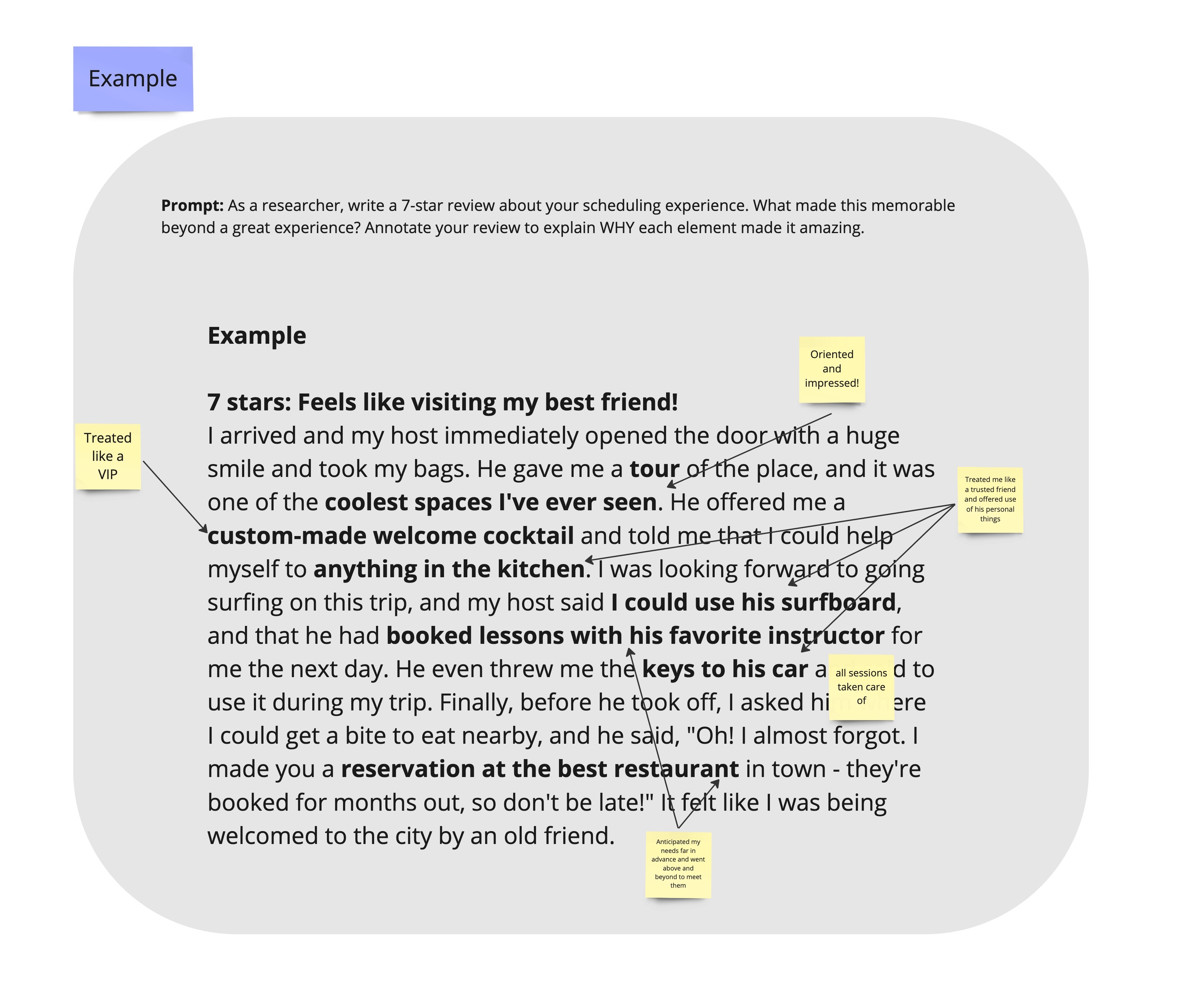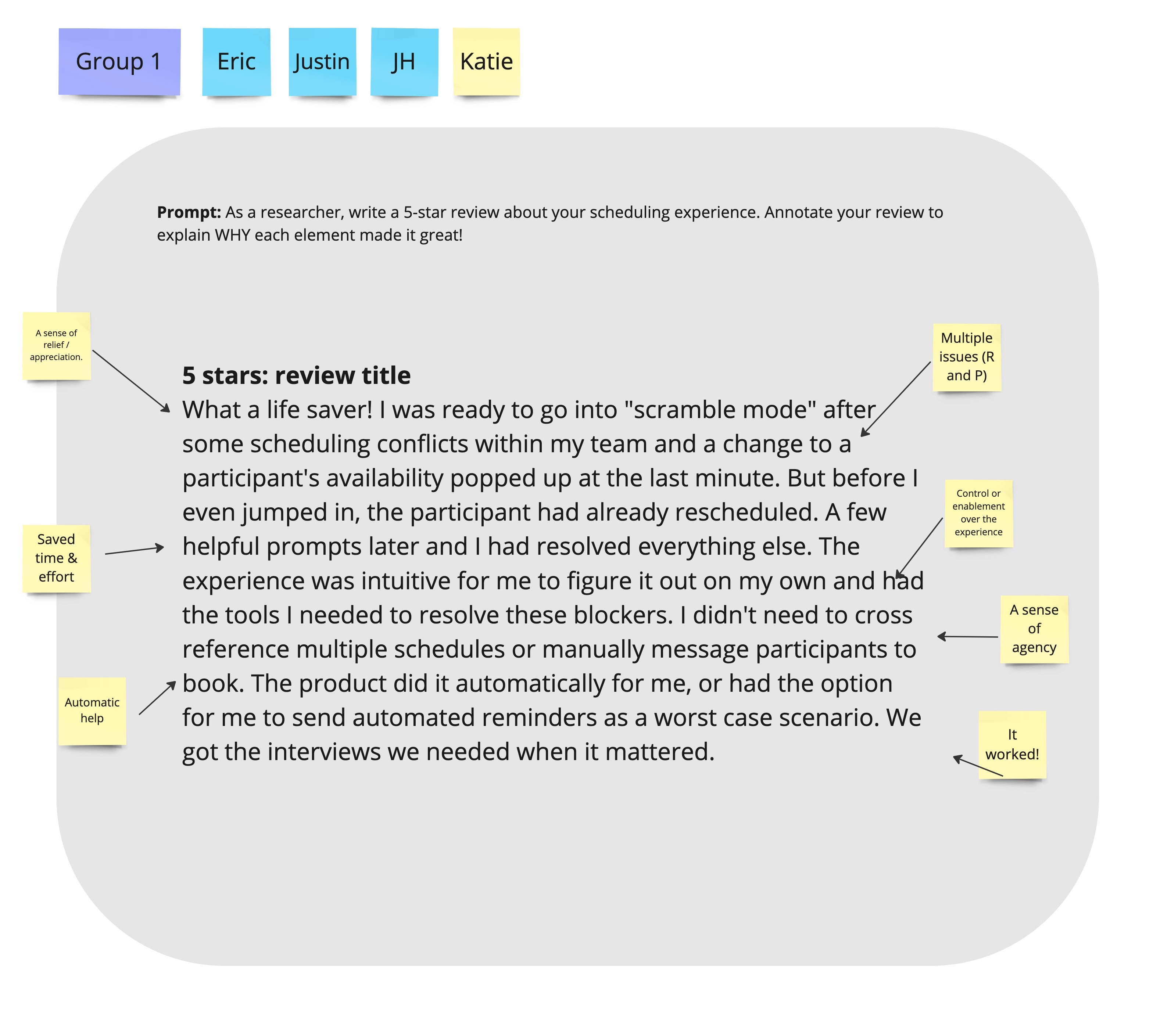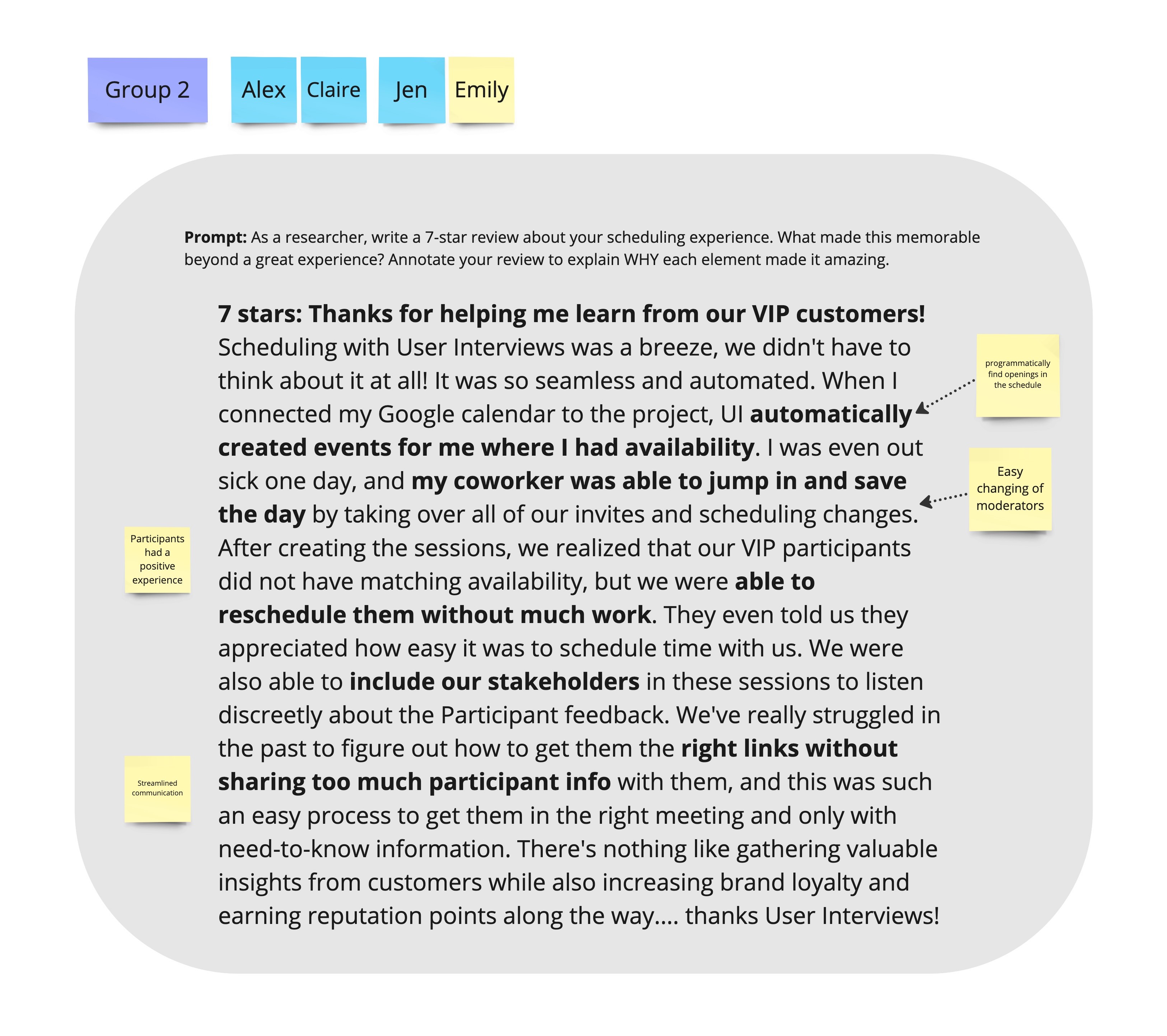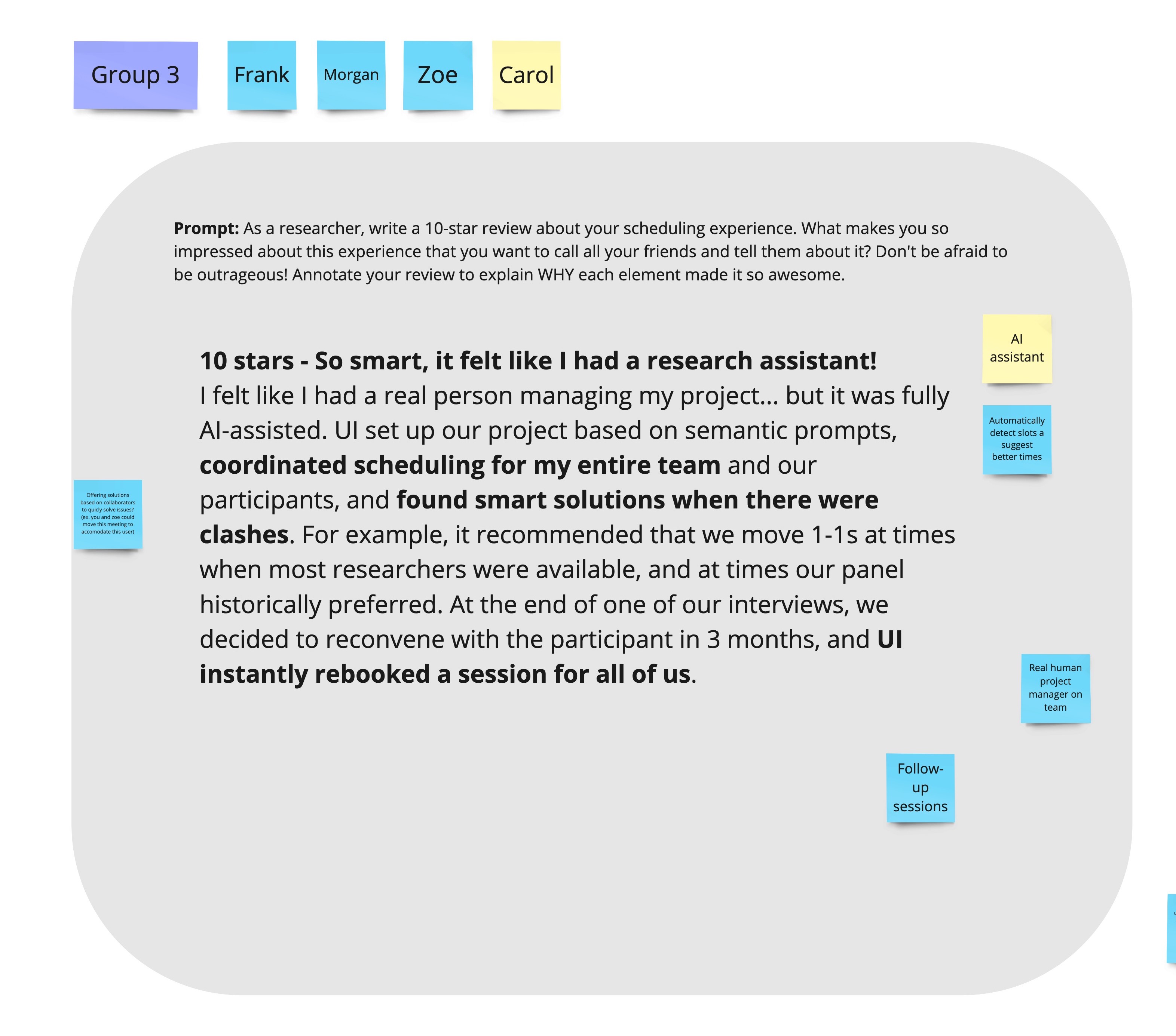Product development: building trust during early ideation
Facilitation, ProductContext and goals
Product and focus area
I was working as a product manager* for a company whose software platform for user researchers. It supported their user research projects by streamlining participant recruitment, messaging, distributing incentives, scheduling, and other logistics.
For this project, I was kicking off a new product team** whose goal was to reimagine our product’s outdated scheduling flows. The designer and I started by doing our own user research project, in which we interviewed other user researchers about the challenges they faced in their work.
*product manager: a team leader that facilitates decision-making on a product team to develop software while balancing business needs, customer needs, usability, and feasibility; and that facilitates communication between the product team and cross-functional stakeholders such as marketers, sales reps, customer success reps, operations managers, content experts, executives, and other specialized roles
**product team: a cross-functional team including several software engineers, a designer, an analyst, a researcher, and a product manager
Situation
Our task was to kick off the team’s design and development work with initial mockups: both mockups of our long-term vision for the product area and mockups for the first iterative steps toward that vision. The team also needed to share early work with stakeholders to get input and work toward buy-in.
I designed a ideation workshop to seed a creative, inclusive culture of collaborative problem-solving in the new team and stakeholders. The session goals were to:
- Build trust on the team and with stakeholders- Align the team and stakeholders around a shared understanding of customer problems
- Make sure teammates and stakeholders all feel that their voice and input is valued
- Generate ideas for the key elements of our long-term vision for the product area
- Encourage the team to set aside week-to-week development constraints and think big about the long-term possibilities for this product area.
- Generate and build consensus around most important design principles as input to first round of design mockups
Workshop
Opening: anchoring the workshop in the user voice
The team’s designer and I opened the workshop by sharing insights from initial research to understand the needs of the users. We played a video highlight reel to help workshop participants build empathy for the users.

Solo warm up
Each workshop participant had a solo section of the board with these rapid-fire prompts. They were encouraged to put themselves in the shoes of the users and answer the prompts quickly, going for quantity over quality and withholding judgement.

Small groups: three prompts to write fake reviews
Participants were put into groups of 4 with others they didn’t usually work with. Each group was asked to respond to the following prompts and write a fake review in the voice of the user. Each prompt was revealed only after the prior prompt had been answered. These prompts are based on a similar activity popularized by AirBnB’s product team.
The first prompt asks participants to write a narrative about a user’s 5-star experience, using their imagination to identify elements of the experience that would “wow” someone.

The next prompt asks participants to get playful and creative to describe how they would “break” the five-star rating scale and go above-and-beyond a great experience.

The third prompt asks participants to think outside the box and create an exaggerated story about a once-in-a-lifetime, incredible experience for the user. The goal is to get participants to set aside constraints and feasibility concerns.

The full group reconvened and each small group shared one one of their reviews. The energy of the room was fun and lively.
Identifying elements
In order to have more actionable ideas for the next phase of design, I asked each small group to now revisit their reviews and tag elements that contributed to the experience.



Affinity mapping
Finally, we did a round of affinity mapping with the identified elements to pull out common themes.

This collection of themes (as well as the narrative reviews) became the jumping-off point for our designer to create the first version of our mockups.
Outcomes
This early ideation workshop created energy and momentum for the team to tackle this new problem area, and contributed to these outcomes:
- Stakeholders better understood the prioritized customer problems, which led to more engagement with team updates and later requests for feedback.
- It set a tone of trust between the product team and stakeholders by demonstrating that the product team solicits and values input from stakeholders and will communicate transparently, even while in early stages of problem solving.
- We gathered “think big” ideas from the collective wisdom of cross-functional stakeholders and team, and built consensus around key elements that the first design mockups should reflect.
Reflections for next time
The next time I do a workshop like this, I’ll consider these changes:
- For each prompt, I could have the small groups pass their response to another group. That group would then build on it for their response to the next prompt. This would cross-pollinate ideas and foster creativity and group cohesion.
- I could have had a stronger closing that builds a bridge into the next stage of the work. For example, I could have ended with a go-around where each person answers the prompt: “Pick one word that describes how you want the researcher to feel after they have a 10-star experience with our new scheduling flow” or “Share one word that you’re most excited about for developing our new scheduling experience.”
- I could have also asked the group to continue thinking about this problem outside of the workshop by assigning homework. For example, I could ask everyone to choose one of the key design elements from the workshop and find an example of another product that exemplifies that element, and then share it in the team’s channel in the next two days. This would encourage diffused thinking instead of focused thinking, and increase engagement between rounds of design mockups.
